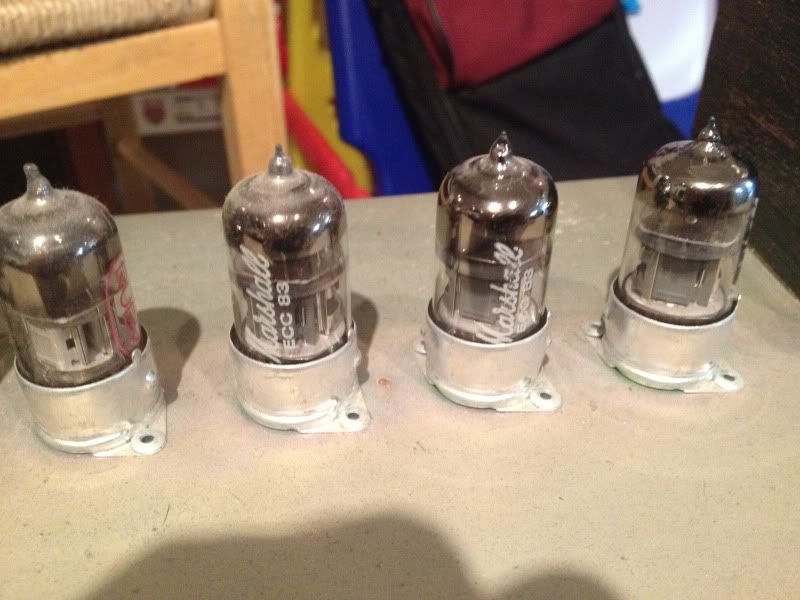Hey everybody. I bought a JCM 900 SL-X about a month ago. I love the way it sounds, but I am pretty sure that it still has the stock tubes in it, and would sound much better with some new ones. Right now it has all Marhsall ECC83 preamp tubes and some Sovtek 5881s in it. I thought about switching to EL34s because that is a pretty popular change on them, but I also read of many people that prefer them with 5881s, or 6L6GC so I thought I would make my life easy by just getting a matched quad of JJ 6L6GC power tubes and a mix match of different types of preamp tubes to do my first full tube change.
I know that the preamp tubes are basically a free-for-all and I can move those around with all different kinds for the perfect tone, but the power tubes are a little bit more difficult in that they need to be biased every time they are put in the amp. I have already done a decent amount of reading on other forums about changing tubes, and spent a good amount of time on the Eurotubes website watching their videos.
Here are some pictures of what I have to work with.
New tubes:

A view from above:

A view from below. (I read that you can stick a 1ohm/1watt/1% tolerance resistor between pins 1 and 8 that I can then use to measure with my multimeter. Right now there is just a wire bridging that gap as seen in the pic. I don't NEED one of those bias probes right? I would really rather not have to buy one. I have several digital multi-meters.

Lastly, closeup of the preamp tubes:

and closeup of the power tubes:

It would be very appreciated if somebody could help me through this. I have made at least 50 cables, built my own mic preamps, and tore apart tape machines and other gear many times. I know I can do this, and I'm not afraid to do it. I just need a bit of guidance for my first time doing it
I know that the preamp tubes are basically a free-for-all and I can move those around with all different kinds for the perfect tone, but the power tubes are a little bit more difficult in that they need to be biased every time they are put in the amp. I have already done a decent amount of reading on other forums about changing tubes, and spent a good amount of time on the Eurotubes website watching their videos.
Here are some pictures of what I have to work with.
New tubes:

A view from above:

A view from below. (I read that you can stick a 1ohm/1watt/1% tolerance resistor between pins 1 and 8 that I can then use to measure with my multimeter. Right now there is just a wire bridging that gap as seen in the pic. I don't NEED one of those bias probes right? I would really rather not have to buy one. I have several digital multi-meters.

Lastly, closeup of the preamp tubes:

and closeup of the power tubes:

It would be very appreciated if somebody could help me through this. I have made at least 50 cables, built my own mic preamps, and tore apart tape machines and other gear many times. I know I can do this, and I'm not afraid to do it. I just need a bit of guidance for my first time doing it
 ) to you guys and I am doing something right. I haven't jolted myself yet and I don't plan to! I've done it before with other things and I know it sucks! Sorry for the mess of questions guys. I really want to be able to understand and do this myself. I'm just waiting for the day that a band comes in to record and his amp blows up and I am able to fix it right there in front of them. They would immediately become a return client!
) to you guys and I am doing something right. I haven't jolted myself yet and I don't plan to! I've done it before with other things and I know it sucks! Sorry for the mess of questions guys. I really want to be able to understand and do this myself. I'm just waiting for the day that a band comes in to record and his amp blows up and I am able to fix it right there in front of them. They would immediately become a return client! 
Comment